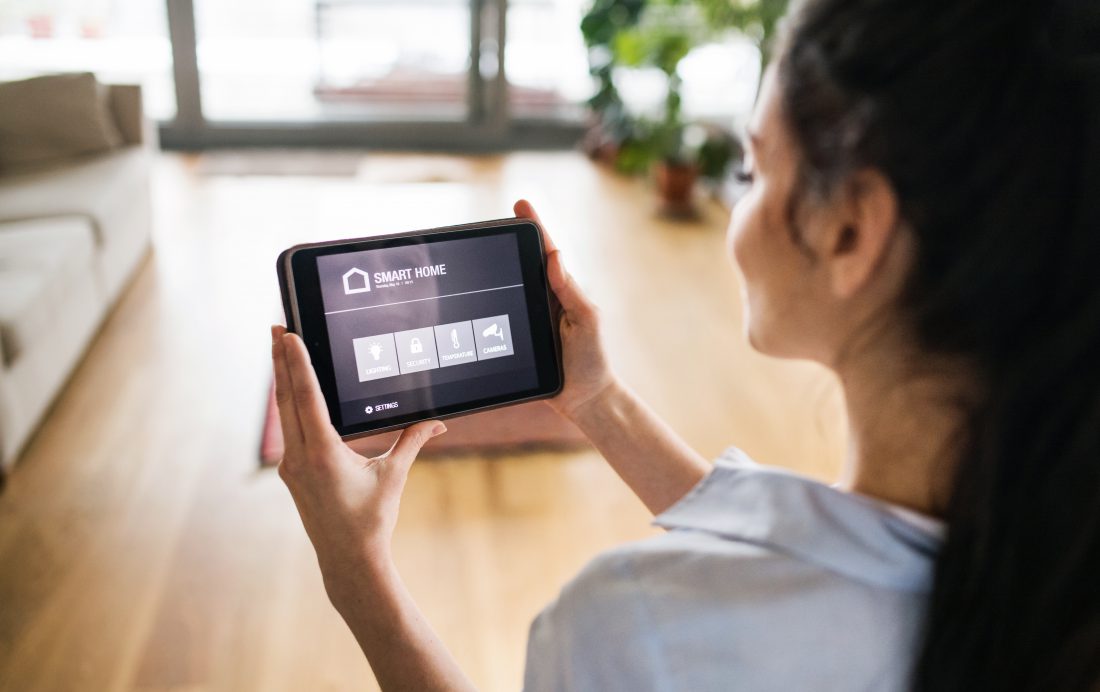2020: The Year of Home Automation

Smart home devices and voice automation are built on a simple principle: their purpose is to make life easier and more efficient. They allow consumers to hold the baby, cook dinner, open the door, and vacuum the rug all at the same time. However, in-home connections can make smart home devices lag or operate in fits and starts. The last thing consumers want is to rely on something to work… and it doesn’t. That scenario adds stress and time, two things that run counter to the smart home unique selling proposition. As 5G expands, smart devices will likely become more desirable to homeowners as they become more reliable. So, where will these changes be felt the most in 2020?
In-Home Cameras
Consumers have already started to come around to the idea of having cameras in their home. Doorbells, baby monitors, workout equipment, smoke detectors, and computerized assistants (Alexa/FB Portal/Google home) have all integrated cameras into their functionality. This trend is likely to continue as cameras – and the algorithms that analyze the camera’s footage – become more sophisticated. Video generates a huge amount of data points on which consumers can automate and optimize their home. Facial recognition, voice recognition, movement sensors, and historical data caching can all be used to help make life easier in the home. Depending on who is at the front door, the doorbell can unlock or lock the door. The baby’s monitor can trigger music to turn on if it senses restlessness. The examples are endless. For marketers, this data means a better understanding of how consumers run their homes and the values they use to guide their lives. And all of this information can be used to better develop and market products in the future.
Kitchens Go High-Tech
One key place where consumers are looking for solutions is the kitchen. Cooking takes time, and the modern family is trying to accomplish WAY too much in WAY too little time. Concocting a delicious meal each evening is one of those promises families try to keep, but rarely achieve. It is just hard. With smart technology advancements cooking is going to become easier. Access to the internet means having recipes read to you as you add the ingredients and cameras on kitchen range hoods means knowing if food needs to be stirred while you try to wrangle your kids. You’ll have the ability to turn on the vent automatically in the case of accidentally burned dinners, and grocery list tracking allows you to know exactly what supplies you need to make the dishes you want to make. While smart home technology is not entirely solving mealtime, it is making it faster and easier to achieve. Again, for marketers this means understanding shopping habits, meal prep timing, and consumer level data that can inform all kinds of marketing questions.
Home Management
Thermostats, lighting, shades, and locks (oh my!). While all smart devices make life easier, smart home management devices make you a better homeowner. They have been around for several years but up until now, their interaction has been limited. In 2020 key data sets will start influencing how these devices work with one another through their hub systems. One easy way to increase the temperature in a home, without spending money, is to open the curtains wherever the sun is shining in. With the thermostat triggering the shades to open based on the temperature as a first attempt to increase the heat in your home, consumers might be able to spend less on heating their house. This type of interaction is only possible through a hub that can synthesize both data sets, command multiple devices, and have enough bandwidth to manage multiple actions at a time. Another example would be utilizing Lutron Caseta smart switches to turn lights on when a doorbell security system, like Ring, senses motion at your front door. Again, 5G will be central to these kinds of desired in-home management scenarios. This is a huge boon for marketers. The hub design will be able to provide a full view understanding of consumers at home and how they like to live.
As we roll into 2020 these changes won’t happen all at once. It will happen in fits and starts, like all major transitions. However, by the end of 2020 it is likely to be much clearer to consumers that smart home technology, driven by voice activation, will make their lives easier. Marketers, similarly, will need to continue to overhaul their understanding of consumer data – what is useful and actionable to drive sales and consumer acquisition versus what is just interesting, but ultimately irrelevant, data. The more we know about consumers, the better marketers we can become, and the in-home experience of products is a data point that, until the smart home revolution takes place, is likely to remain a mystery.
Privacy
As more smart devices come online in consumer’s homes, the specter of data misuse and general identity protection will become very important. The good news is that modem and router companies (like ARRIS Technologies) have already begun partnering with companies like McAfee to offer secure in-home connections at the router or modem level to ensure ALL devices on that IP address are secure. This is excellent news in the fight against hacking and data theft.
However, the sale of collected data is another beast altogether and is likely to be the bigger privacy issue looking into the future. Much like cell phone data, the data generated by smart devices can be very personal and unique and can make targeting advertising even more personalized. This is great for marketing and business, but potentially problematic for consumers who don’t want their data shared. That being said, recent polls suggest that consumers say they are concerned about their privacy but only 16% of those who expressed concern around the issue would be unwilling to buy smart home devices in the future.
All of this adds to the discussion around terms and conditions attached to all these products. Portal by Facebook’s T&C’s clearly states that they are recording and storing audio and video when calls are made on the device and microphones are, by default unless changed, always listening for “wake words.” Essentially, consumers should assume Portal, and devices like it, are caching tons of private data and conversations for their own internal use and right now there are few regulations on how that data can be monetized. The question consumers will need to ask themselves is around the benefits and tradeoffs of adding smart home devices to their private homes. Even if regulations of these new data sets are created and passed by the U.S. government that is no guarantee that the data won’t be mishandled or abused.


